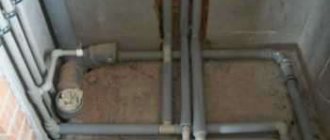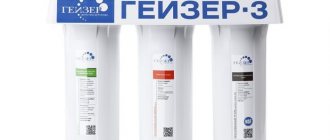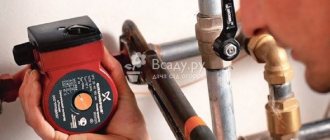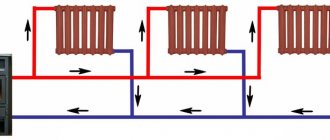Why it is not recommended to pour antifreeze into the heating system
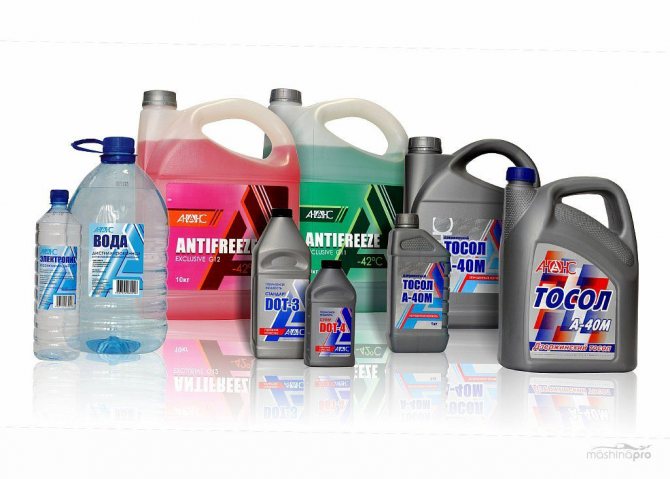
Varieties of automotive antifreeze
Before pouring antifreeze into the heating system, you need to find out its exact composition. In the vast majority of cases, it includes ethylene glycol. This substance is extremely toxic to humans. In a liquid state, one should beware of contact with eyes and exposed skin. But antifreeze, which turns into steam due to exposure to high temperatures, when overheating or a small leak of the coolant occurs, is much more dangerous.
But is it possible to pour antifreeze into the heating system in this case? Subject to all safety rules and requirements, the use of automotive antifreeze is allowed. However, in this case, it is necessary to take into account the features of the system operation:
- Antifreeze has a higher viscosity than water. Therefore, it is necessary to replace the circulation pump with a more powerful one - by 15-20%;
- High degree of fluidity. A small microcrack or loose connection in the pipeline is enough for the antifreeze for heating the house to begin to penetrate into the room. Be sure to replace all rubber gaskets with paronite;
- Can antifreeze be poured into an open-type heating with a leaky tank? No, this is strictly prohibited;
- The heating rate of the coolant with the addition of antifreeze will be lower than that of plain distilled water. This must be taken into account when choosing the temperature regime of the system;
- You can not pour antifreeze for heating systems in a concentrated form. This can damage the pump and damage the boiler. You can find out the ratio of automotive antifreeze to water on the label.
What other problems can you face after pouring an anti-freeze liquid? First of all, its quality. If the manufacturing technology is not followed after prolonged thermal exposure to the antifreeze solution, third-party substances appear in it in the form of white flakes. They negatively affect the state of the heating system, can cause a decrease in the throughput of the pipeline and the transfer of energy by the heat exchanger.
Antifreeze can corrode polypropylene pipes. It cannot be used in such pipelines.
Antifreeze for the heating system
Our topic today is quite controversial and is widely discussed on the forums. It will be about the use of antifreeze for heating a house. Speaking of antifreeze, most likely, they mean a coolant for car radiators. But antifreeze, first of all, is a liquid that does not freeze.
The same can be said for antifreeze.
Is there a difference between them and what is it? Why does everyone say that it is impossible to pour antifreeze into the circuit, but in practice people still pour it? Or maybe this is another ad trick? We will help you figure out whether it is possible to pour antifreeze into the heating system "from a to z" and unravel this tangle.
Is it possible to pour antifreeze into the heating system
Antifreeze for home heating
Preparation of the solution and its filling
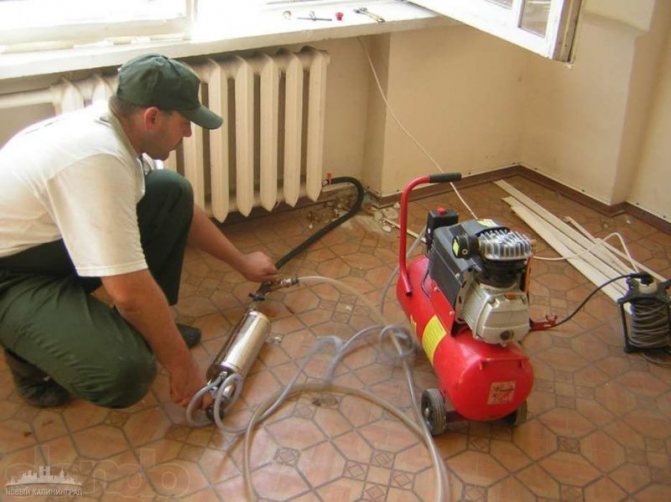

Flushing and filling pipes with antifreeze
In order to add antifreeze to the heating system of a house, you need to correctly select its composition. All manufacturers produce ready-to-fill fluids. The temperature at which crystallization occurs is indicated in the name. For example - A40-M (-40 ° C). It is important to know that ready-made antifreeze cannot be diluted with water. To do this, you need to use special concentrates, 95% composed of ethylene glycol.
Preparing a solution of antifreeze for heating
For the correct filling of antifreeze into the heating system, it is best to use a concentrate.This has the added benefit of allowing you to choose the ratio of antifreeze to distilled water yourself. In addition, you can more often find a fake of an already prepared solution than a concentrate.
First, it is necessary to determine the minimum temperature at which the effect of coolant crystallization will not be observed. To do this, you need to know the ratio of antifreeze for heating a house to water. They are presented in the table.
| Concentrate to water ratio | Freezing temperature, ° С |
| 1:1 | -40 |
| 2:3 | -30 |
| 1:2 | -20 |
But first you need to check if this antifreeze can be poured into the heating system. To do this, make a solution in a small transparent container (glass) and leave it for several days at room temperature. After this period, no sediment or foaming should be observed in the liquid. If this is present, the quality of the concentrate is very low.
When antifreeze leaks from the heating system, you must first ventilate the room, eliminate the accident and thoroughly wash the places where it got.
Pouring antifreeze into the heating system


For pouring, it is best to cut off the top of the container.
Having decided that this particular brand of antifreeze can be poured into the heating, they begin to prepare the system. First, all the coolant is drained. If antifreeze was previously poured into the pipeline, it should never be mixed with a new solution.
Then the following actions are performed:
- Thorough flushing of pipes and radiators. Before adding an antifreeze solution to the heating system of the house, you need to remove all internal contamination. It is best to perform several circuses until the water is completely clear;
- Checking all connections and pipe joints. It is imperative to replace the rubber gaskets;
- Pressure testing - is necessary to check the system for a possible increase in normal pressure. In this way, you can identify elements with hidden defects;
- Pouring antifreeze for the heating system using a special pump.
During this procedure, you must follow all safety rules. The room must be well ventilated - all windows and doors are open. A protective suit, respirator and rubber gloves must be used. If, while pouring antifreeze into the heating system, it gets on an open area of the skin, you should immediately rinse it with water. In the event of a chemical burn, consult a doctor.
The lower the concentration of antifreeze, the lower the likelihood of getting a chemical burn.
Why is antifreeze so dangerous?
In fact, this is the same antifreeze, only of domestic production, which is somewhat cheaper than foreign counterparts, but that's not all. Antifreeze is very toxic due to the content of ethylene glycol in it, it is not intended to work inside the heating system, but nevertheless it is still used, and this, one might say, popular use, but the manufacturer is prohibited from using such antifreeze, and there are weighty the reasons:
- Antifreeze is very toxic to humans; contact with the skin and inhalation of vapors should be avoided. Its insidiousness is that it has less surface tension compared to water, antifreeze has a much greater fluidity and reveals the smallest cracks in the heating system, the existence of which you would never have known if you had not once applied antifreeze. Through these microcracks, the poisonous substance will flow out, and you will inhale it and be poisoned. The emerging leak, even the smallest one, will not disappear by itself, as sometimes happens with a water leak, the substance will flow until you repair the pipes and joints.
- Antifreeze is strictly prohibited to use if the heating system has a double-circuit boiler.
- Antifreeze can ruin your heating system. It has a very low temperature, when it is used, the additive tissue is destroyed, and an aggressive liquid begins to corrode the heating circuit.This is the main reason why the use of antifreeze for heating a house is prohibited.
- Antifreeze, despite its fluidity, has a viscous and heavy consistency, the circulation pump of the system should be much more powerful than usual by 15-20%. To pump this fluid, you will need to replace the circulation pump.
- Stagnating, antifreeze forms white flakes that settle in the heating system and spoil it.


If all of the above properties of antifreeze did not convince you to choose another means for heating the room, then here are some tips on how to use it.
Types of antifreeze liquid for heating
Having decided that non-freezing coolants for the heating system should only be of factory quality, you can start choosing a certain composition. It must be adapted to a specific heat supply scheme, and its performance cannot degrade the parameters of the system.
Before pouring non-freezing liquid into the heating system, you need to find out if it will negatively affect the components of the heat supply. To do this, you should read the instructions for use, which must be attached. It is also important to pay attention to the main component of non-freezing liquid for heating boilers. Not only the state of the heat supply components depends on this, but also the operating conditions:
- Ethylene glycol... It is highly toxic. Therefore, it can only be used in closed circuits. Difficulties may arise when pouring this type of freezing liquid into the heating system. In a vaporous state, it is dangerous to human health;
- Propylene glycol... In fact, it is a food additive, therefore it can be used in both open and closed heating systems. Unlike ethylene glycol, the crystallization temperature is at the level of + 80 ° C, which makes it possible to use it for the operation of solid fuel high-temperature boilers. The only drawback is the high cost;
- Glycerol... The most popular type of non-freezing liquid for stove heating. Its performance is slightly lower than that of propylene glycol. However, along with this, the cost of glycerin antifreezes is an order of magnitude less. The disadvantages include high fluidity. This can affect the tightness of the pipelines. The way out is to replace rubber gaskets with paronite ones.
Currently, the use of an antifreeze liquid for a home heating system based on glycerin is the best option.
| Name | Structure | Price, rub / l |
| Warm house -30 ° С | Propylene glycol | 65 |
| Dixis -65 | Glycerol | 75 |
| Comfort technology -65 | Ethylene glycol | 120 |
Heating with antifreeze or water
After reading this section, you will most likely give up antifreeze in your heating system. The main plus of antifreeze is the safety of the system at low temperatures, it is completely crossed out by its minuses.
Low heat capacity of antifreeze. Increasing the size of the radiators by 20-23% The heat capacity of antifreeze is significantly lower than the heat capacity of water. Diluting water with 35% antifreeze, we lose about 200 W from 1 kW of thermal energy. This means that a 20% increase in the size of pipes, radiators and boiler is required. In terms of a country house of 300 m 2, we are losing about 60 thousand rubles on increasing the size of the system.
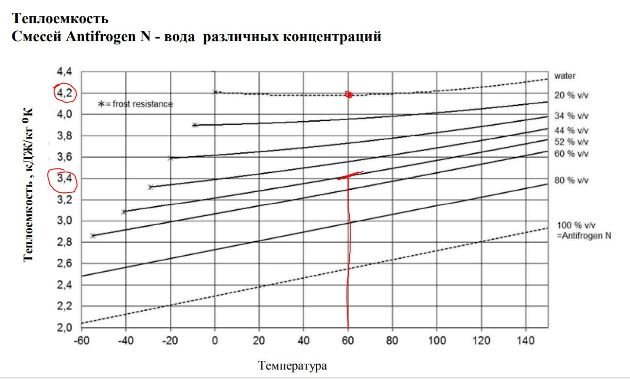

- The service life of antifreezes is from 5 to 10 years. Over the years, antifreeze oxidizes and safely destroys brass compounds. After 5 - 10 years, ethylene glycol and propylene glycol must be drained, disposed of and replaced with a new one. You will not only have to buy new antifreeze, but also pay to dispose of the old one. Unfortunately, in our country there is no service for the disposal of ethylene glycol in small volumes, therefore, it will be difficult to find who to hand over this chemistry. I will not consider the idea of pouring antifreeze to a neighbor's site.
- The use of sectional radiators in systems with antifreeze is unacceptable. Rubber intersection gaskets oxidize quickly and radiators leak. We use only steel panels. The use of galvanized pipes is also unacceptable. Antifreeze successfully flushes out the zinc, and the pipe remains bare.
- Why is antifreeze useless for a country house? Antifreeze will successfully cope with the task - the heating system will not freeze in winter in your absence, but what to do with the water supply system? Water supply pipes at negative temperatures will freeze faster and with worse consequences, because are laid not only in the floor, but also in the walls. You will have to remove the tiles, beat the screed and change pipes in bathrooms, showers, kitchens, replace the entire piping of the boiler room for water supply. Of course, it will not work to pump antifreeze into the water supply system, as well as to lay all the pipes with heating cables.
Conclusion: Antifreezes are suitable either for heating small summer cottages for temporary residence, or large warehouses, workshops and enterprises. Antifreezes are useless in the heating system of a full-fledged country house.
Antifreeze for the heating system of a country house is needed if: you do not plan to live in the house in winter; in the house there are 1-2 bathrooms with a tee water supply system (without a collector), which can be drained before the onset of cold weather.
It is impossible to leave a full-fledged country house in winter without on-duty heating. In winter, it is necessary to maintain constant standby heating + 10-12 ° С. Heating a full-fledged country house for permanent residence with antifreeze is the same losing option as heating a house with a warm floor, which is applicable only in the southern regions of our country.
So your engineering systems will be truly protected without antifreeze.
If you liked my article and you are looking for reliable design specialists - call and write to me by mail.
What is it


Antifreeze or antifreeze is an anti-freeze liquid that is poured into the expansion tank of a car. It is also used in heating systems. In translation, our language means "anti-freeze". That is why it is also called anti-freeze. That is, this liquid does not freeze at negative temperatures, it also cools the engine during operation and protects its elements from corrosion.
Anti-freeze production does not have a negative impact on nature. The composition of factory antifreeze often includes ethylene glycol, propylene glycol, glycerin mixtures
, as well as monohydric alcohols and other substances that are based on water. Sometimes more flavorings are added. Note that making antifreeze at home is quite easy. How exactly? Read on!
Replacing water with antifreeze
If water has already been used in the system, and you want to switch to antifreeze, then two circumstances should be taken into account.
Secondly
, it is never possible to completely remove water from the heating system. Some of the water remains. If you pour in simply prepared diluted antifreeze, then its concentration will be insufficient for reliable protection against freezing. Thus, a concentrate must be applied. I usually mix the concentrate with diluted antifreeze in a 1: 1 ratio. After filling the system, you need to start the circulation pump (for a system with forced circulation) or turn on the boiler (for a system with natural circulation) so that the coolant mixes well. Then you need to pour out some coolant and measure its density. There is an instrument for measuring density that is sold in most auto dealerships. This device is used to prepare a car for the winter (check the properties of antifreeze in the engine cooling system), but it is also perfect for our purposes.If the device shows a freezing temperature lower than needed, for example -50 degrees, it's okay, but if the temperature is higher than we need, then we will have to drain part of the coolant and replace it with concentrate. The drained coolant must be disposed of carefully, it is poisonous, it should not be poured into septic tanks and ditches.
I also want to draw your attention to the fact that different antifreezes may be incompatible with each other. There is an opinion that it is impossible to mix a red composition with a composition of a different color.
This is true, but in fact there are other undesirable combinations. Supplements of different brands can react with each other or simply reduce the effectiveness of each other. Unfortunately, manufacturers do not say what other antifreezes their product can be mixed with. My advice is to pick one brand and use it. If, nevertheless, there is a need to mix, then mix liquids of the same color and before pouring, pour out a little coolant from the heating system, mix it in a jar with a new composition and see if a precipitate falls out, the liquid does not become cloudy, and does not lose homogeneity.
Unfortunately, errors are periodically encountered in articles, they are corrected, articles are supplemented, developed, new ones are being prepared. Subscribe to the news to keep up to date.
It is convenient to fill the system through the water drain tap - it stands at the lowest point of the system. With this method, airing is practically excluded, since the coolant enters from below, gradually squeezing all the air into the expander. Read the answer.
Examples of adhesives. Poxipol, liquid nails, universal superglue. Armir. Typical gluing errors. Correct technology. Additional techniques - armir.
Methods for fixing a threaded connection. Methods of fixing (stopping) a threaded connection. Vibration and spontaneous protection
Apricot, apricot tree. Growing, planting, reproduction, watering. How to plant and grow an apricot. We propagate, plant, water the apricot de.
Thrips. Colorless / yellowish spots, rough stripes, leaves. How to identify a thrips infestation. Light spots, roughness are signs of the disease.





